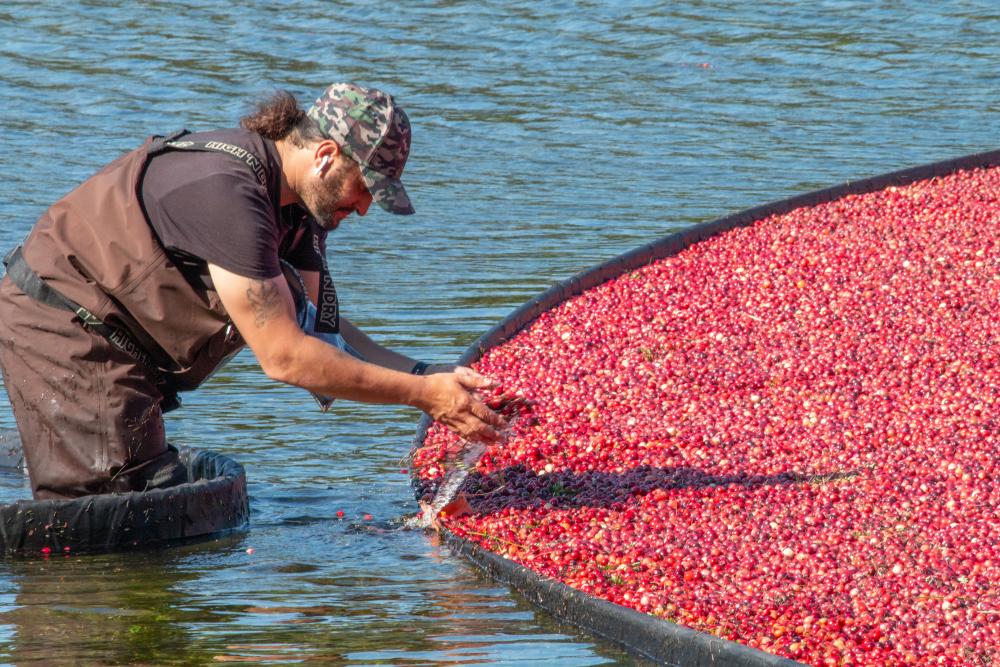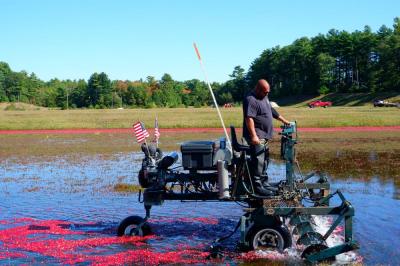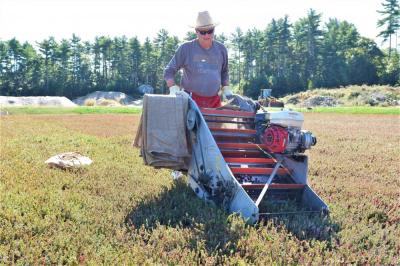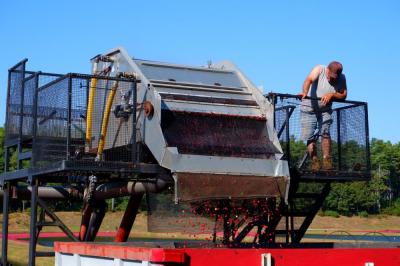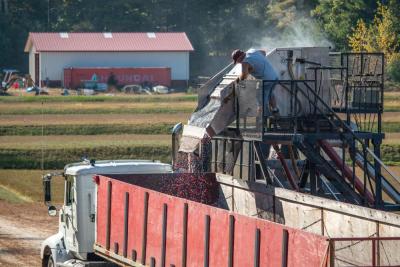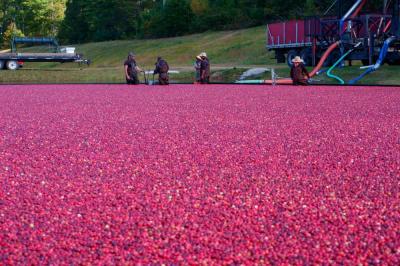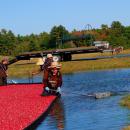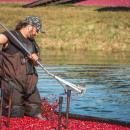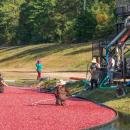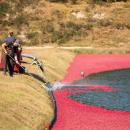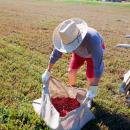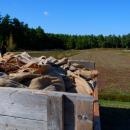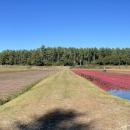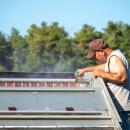Cranberry harvest bogged down by warm weather, rain
ROCHESTER — It’s 75 degrees and sunny on an October Wednesday at the Hartley-Rhodes bog, where acres and acres of cranberries have been growing for the season.
The berries, refusing to wait for cooler weather, are ripe. It’s time to harvest, and Selectman Woody Hartley is out on one of the dry bogs strategically placing bags to fill with the crop.
The berries sweeten better with cold nights, which have been few and far between this autumn. “Creates the sugar in ‘em,” Hartley said. “It makes ‘em red.”
But nearby wildlife seems to have no issue with more tart berries, and the farm’s dry bogs are laden with imprints of deer who decided to take a night’s rest after a feast.
“They take their share,” Hartley said.
For humans, perhaps with a sweeter palate, tart berries can be cooled indoors after harvesting, mitigating the effects of the warm weather. Still, the heat poses more than one issue for harvesting.
“If you have rot, it rots quicker,” Hartley said. Plus, the Selectman and farmer added, the days of harvesting are “a lot more comfortable with a little breeze and fall temperatures.”
But the harvest must go on. First, it’s the farm’s dry bogs, which grow the cranberries sold at markets like Fieldstone in Marion, ripe and whole.
Hartley plucks the berries from their stems with a machine somewhat resembling a lawnmower. They’re lifted into a burlap sack, which Hartley fills and leaves sitting on the bog. His grandkids, when they return home from school, will take care of them.
“We need about 10 good days,” Hartley said, to harvest. Each dry bog, passed over with the machine several times, takes about two days to clear.
The dry harvest this year has been good, Hartley said. But he’s preparing for the wet harvest the next day, and workers are out on flooded bogs with machines that lift the cranberries from their stems to be corralled and sucked from into a large truck. The outlook on these berries, used to make cranberry products including sauces and juice, Hartley said, is not as good.
“Almost everybody’s wet berries are substantially rotted,” he said.
Despite the challenges, the US Cranberry Marketing Committee expects an “average crop” this year, projecting a harvest of about 1.9 million 100-pound barrels of cranberries in Massachusetts. That yield would be around 5% higher than the 2020 harvest.
“Similar to last year, our bogs are tracking to deliver a solid crop yield for Massachusetts growers, what I would consider an average crop for our region based on past performance,” said Brian Wick, the executive director of the Cape Cod Cranberry Growers’ Association.
Wick noted that last summer brought a significant drought, which impacted some of the perennial vines this spring. The growing season started slowly with a cold spring, Wick said, before heavy rains meant growers spent a good deal of time working to keep bogs dry.
“We’re down a little bit, but I think that’s probably because of the weather,” said Rochester cranberry farmer Beatrice Renauld. “It was a stressful year last year because of the drought and this year we’re having problems with rot because of the rain.”
Like all farming, the remainder of this year’s harvest is dependent on the weather. If there’s too much moisture on the ground or in the air, the day of dry harvesting is a wash.
“Some days you get two hours in, others you get eight,” Hartley said. But, with 10 good days of harvesting, cranberries from the Hartley-Rhodes bog should be in no short supply for Thanksgiving dinner.



